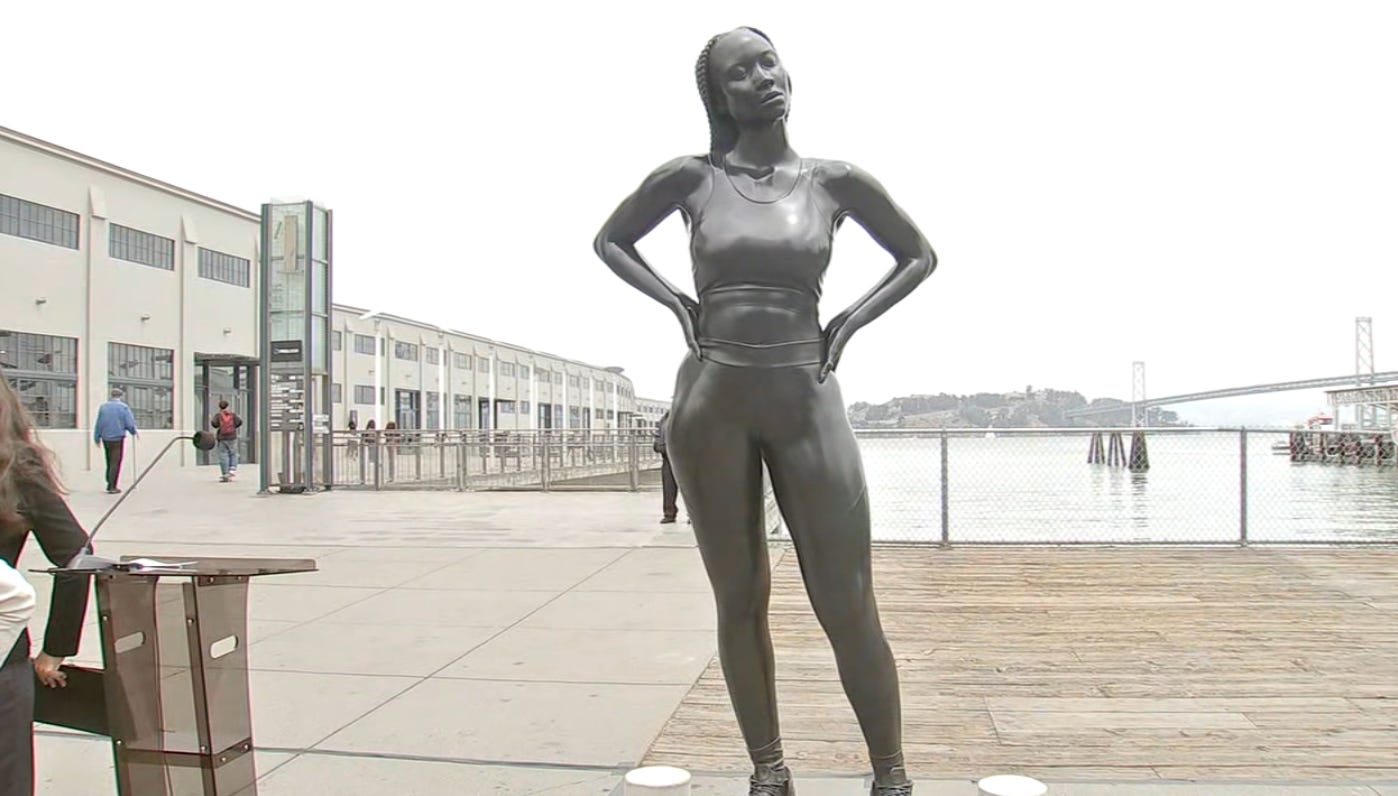Liberals, Stop Using Black Women in Your Stance Against Beauty.
The recent installation of a fat Black statue in New York City has drawn predictable criticism from right-wing commentators. However, what has received far less attention is the growing frustration
The recent installation of a large Black statue in New York City has drawn predictable criticism from right-wing commentators. However, what has received far less attention is the growing frustration among Black women. (see some of the commentary).
Once again, Black women are positioned as both the face of liberal social dissent and the inevitable targets of conservative backlash. This method of “inclusion”, casting Black women as visual symbols of leftist rejection of traditional beauty norms, is not just tired, it’s blatantly offensive.
Last year in San Francisco, I walked past a similar statue by the same artist on the Embarcadero. A towering figure of a casually dressed young Black woman stood there, striking and confrontational. It’s not beautiful because it isn’t meant to be.
It’s intentionally austere, making a direct political statement, as is the artist’s right. But it’s worth noting that the artist is not a Black woman, but a well-meaning progressive who may not understand why this kind of representation feels so exhausting.
I tweeted about it at the time. My thoughts then mirrored those of many Black women now expressing about the Times Square installation.
Why couldn’t the statue depict a beautiful, feminine Black mermaid? Or a seafaring goddess? Instead, the artist chose a figure that rejects beauty entirely. That may be a legitimate artistic position, but choosing Black women as the canvas for that rejection comes with rarely acknowledged implications. It’s not as radical or progressive as it postures itself to be.
For the past decade, well-intentioned efforts at “visibility” have left Black women in a state of confusion. While we are increasingly included in the media, we are rarely allowed to be portrayed as feminine or beautiful. Publicly, there’s a broader push to reject harmful beauty standards for women and girls. Still, in doing so, the media often relegate Black (and sometimes Asian) women to the role of the politicized “ugly” other. Meanwhile, traditional beauty remains reserved for the same groups it always has.
Black American culture is, by and large, culturally conservative and does not embrace the coastal middle-class bohemian bourgeois liberal disdain for beauty. Yet those who create media insist on representing Black women through this lens. Therefore, inclusion becomes a form of aesthetic and political punishment.
To be clear: dark-skinned Black women, fat Black women, older Black women, masculine Black women, and working-class “ghetto” Black women deserve to see themselves reflected in media. But I don’t know many Black women who want to be the left’s default symbol of defiance.
Media in the 1970s, for all its flaws, arguably did a better job of including Black women as beautiful, desirable figures.
What strikes me most is the underlying assumption of these works: that Black women require external validation through distorted portrayals, rather than meaningful authorship of our narratives. That we must be cast as imposing foils to statues of old white men. But who asked for this? We certainly didn’t.
This kind of performative progressivism does nothing to address the material conditions Black women face. Instead, it offers symbolic gestures designed to appease white liberal guilt, who may flagellate themselves in front of the tall neo-mammy caricature. We have become props to uphold someone else's narrative of progress. Our needs, desires, and beauty are all secondary to the political capital our images are made to carry.







This was such an interesting read. You always bring a different perspective than what I commonly see online in my corner of ther web!
Yeah, my first thought when I saw these statues was basically the same. This artist has a problem with black women or, if she's black, she can't like herself that much...